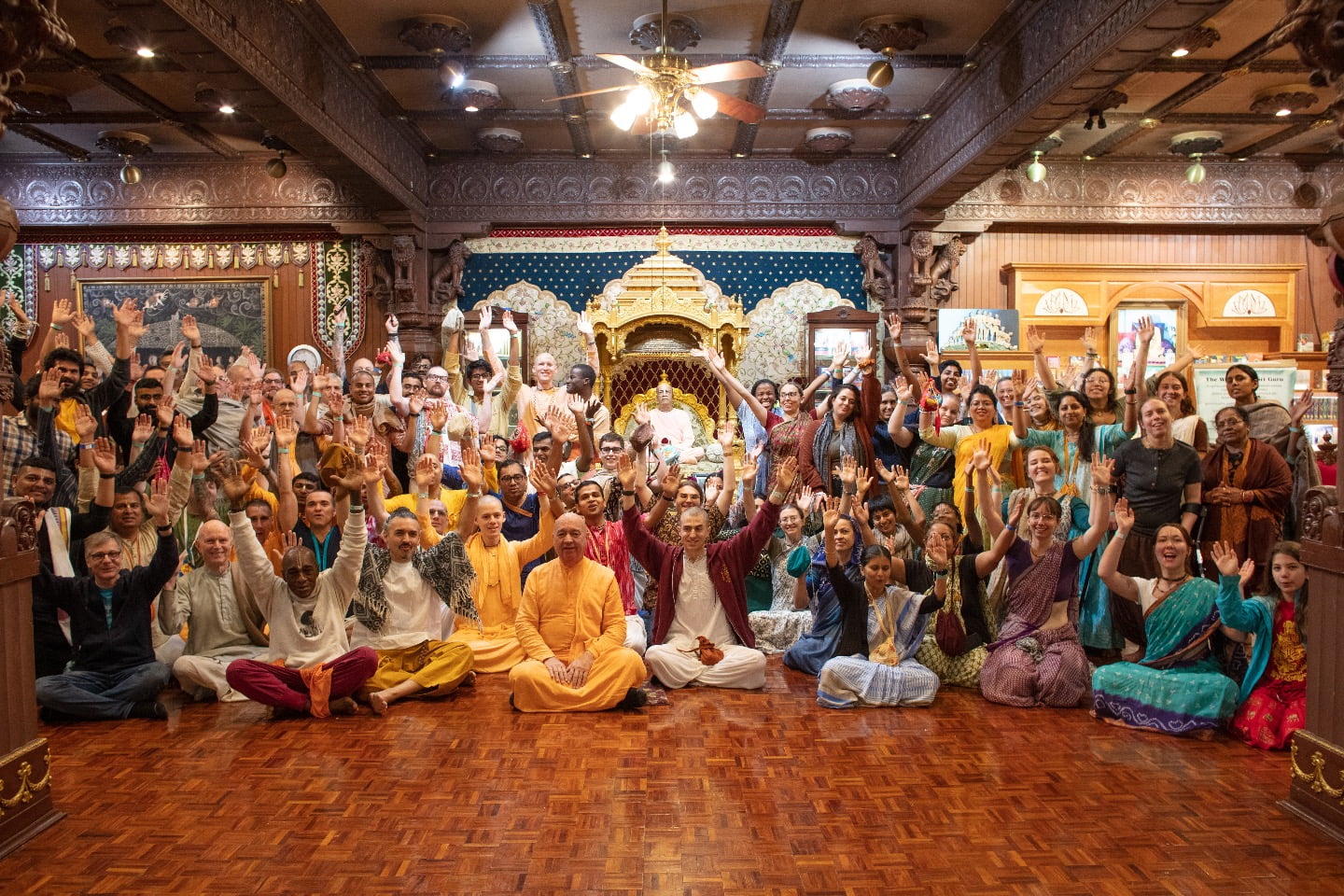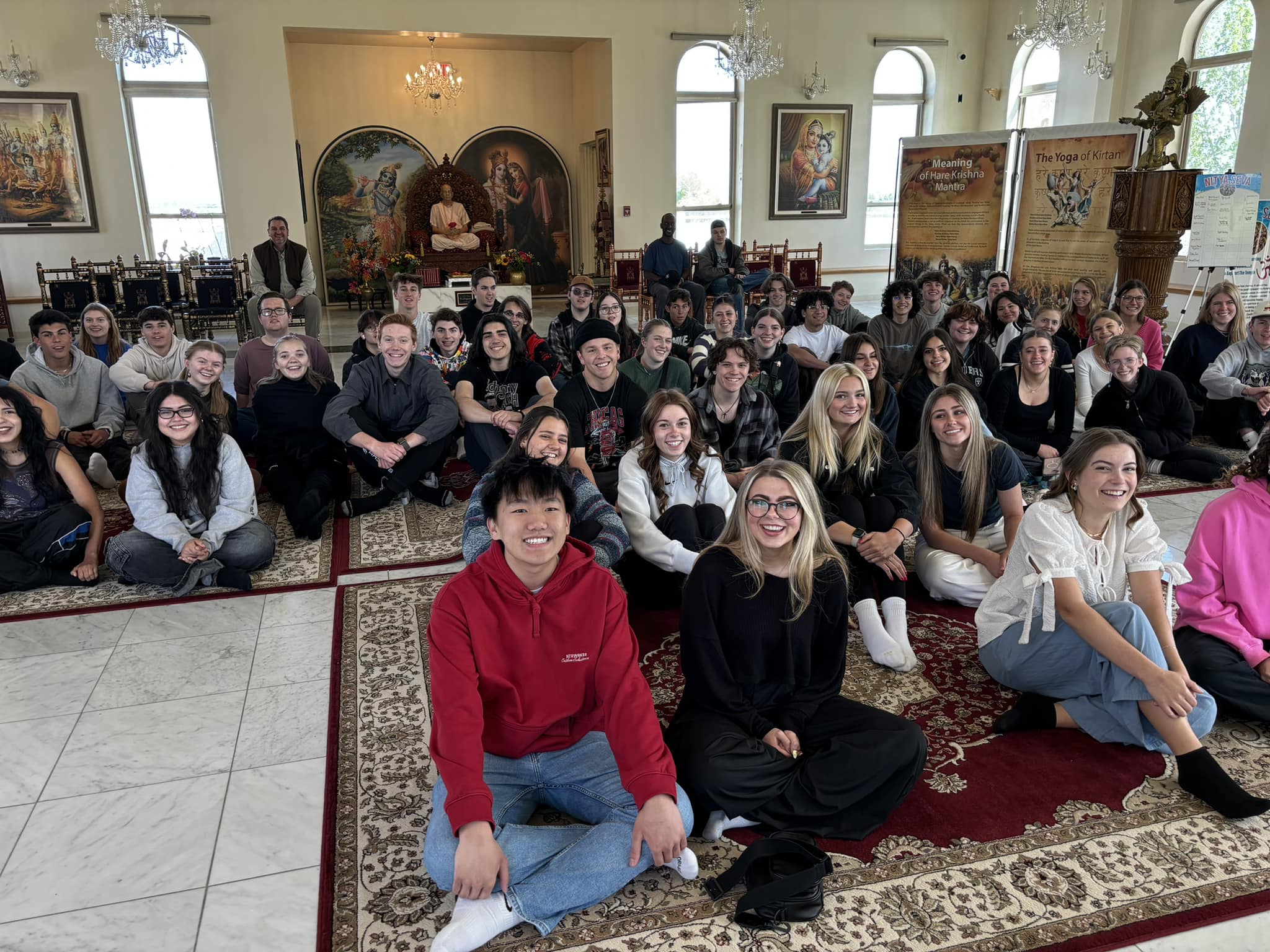New Book Teaches Harmonious Living Through the Bhagavad-gita
By Madhava Smullen | May 08, 2011

July 1st will see Torchlight Publishing release Visakha Dasi’s third book on the Bhagavad-gita, after her children’s edition of the famous sacred text, Our Most Dear Friend, in 1996, and her young adults’ version, Bhagavad-gita: A Photographic Essay, just last year.
Visakha and her husband Yadubara Dasa were introduced to the teachings of the Bhagavad-gita back in 1971 when they were initiated by ISKCON founder Srila Prabhupada—after which they went on to establish ISKCON Cinema, and make many documentary films about the Krishna conscious philosophy and lifestyle taught in the Gita.
But it’s now, with her latest book Harmony and the Bhagavad-gita: Lessons from a Life-Changing Move to the Wilderness, that Visakha gives adult readers insight into just how this incredible piece of spiritual literature affects her own personal day-to-day life.
“Harmony…” tells the tale of how Visakha, Yadubara and their youngest daughter Hari-Priya moved from the concrete jungle of Los Angeles to the spiritual community Saranagati in the forests of British Columbia, Canada. And it conveys the message of the Gita through a series of personal, introspective stories that show how the sacred book guides Visakha and the other members of Saranagati.

“In the late 1990s, my husband and I had grown tired of the expenses, stress, pollution and noise of city life, and wanted to move to a place where our daughter—who was five at the time—could grow up around devotees, free from distractions like television,” Visakha says. “I had been to Saranagati before, and we knew we could afford a little piece of land and a place of our own there, so we made the leap.”
In June 1999, the family drove the 1,800 miles from LA to Saranagati, a beautiful 1,600-acre valley four-and-a-half hours’ drive from Vancouver and half an hour from the tiny town of Ashcroft. Covered with pine and fir trees, there are open areas throughout dotted with devotees’ houses.
A self-contained Krishna conscious community, Saranagati has its own school run by a devotee couple that teaches Kindergarten through 12th grade, and a Gaura-Nitai temple, where all the members congregate regularly. An idyllic place in many ways, it was nevertheless quite a change from LA.

“Since it’s off the grid, each family creates their own electricity,” says Visakha. “One family has hydro-power, which they create with a little turbine in the creek. We have two solar panels, which are great when it’s sunny, but when it’s not sunny we have to use a back-up generator. This of course increases one’s awareness of how much electricity one’s using, and whether it’s actually worth it!”
Of course, the valley gets extremely cold in the winter, and ice can present a problem, but Visakha says her family stays nice and snug in their little house with its wood stove.
“These austerities pale in comparison to the opulences, however,” she enthuses. “There’s the natural environment, and the great company—sincere and serious devotees who lead a pure life, chanting Hare Krishna, and endeavoring to please Srila Prabhupada and gradually advance in spiritual life.”
This environment, Visakha felt, would be a perfect platform to tell practical, real life stories of the failures and successes of a group of people who were trying to apply the teachings of the Bhagavad-gita in their lives. The result, she hoped, would build a bridge to Srila Prabhupada’s Bhagavad-gita As It Is for newcomers to the philosophy, who felt daunted by its size and sometimes esoteric nature.

So in 2003, Visakha began to write about experiences in her life since she had moved to Saranagati, to which she had applied the teachings of the Gita.
“One thing that really struck those of us who spent time with Srila Prabhupada was that he was always observing everything,” she says. “And he was always coming out with some commentary that strictly adhered to the sacred texts, yet brought new light to what we were seeing, whether it was plant or animal life, peoples’ material motivations, or the modes of nature.”
She adds: “I think that in order to be continually inspired in Krishna consciousness, it’s our responsibility to also try to see through the eyes of the scriptures in fresh ways that will help us understand them and protect ourselves from the influence of the material world. And that’s what I’m attempting to do with Harmony and the Bhagavad-gita.”
Visakha’s book is full of endearing examples of how to do this. To illustrate how one should be detached about the success or failure of one’s actions, she tells us how, after planting an entire bed of carrots in her garden and weeding and watering them daily for months, she woke one morning to find only a single carrot left. She then discovered that a bear had dug up and eaten the rest, a not uncommon occurrence in the mountains of British Columbia. This she found to be a perfect opportunity to meditate upon Bhagavad-gita 3.19: “Without being attached to the fruits of activities, one should act as a matter of duty, for by working without attachment one attains the Supreme.”

Elsewhere, Visakha relates how a neighbor’s dog would snap ferociously at her as she took walks in the countryside. When the neighbor explained that the dog only barked at her because he didn’t know her, and tried to introduce them by getting him to sniff Visakha’s clothes and telling him her name, this didn’t change anything. The dog kept barking aggressively when she walked by. Next, the owner told Visakha, “He’s still barking at you because you’re not seeing all beings equally.” This diagnosis probably would have infuriated anyone else, but Visakha took it as an opportunity to consider Srila Prabhupada’s statement in the Bhagavad-gita, “If we learn how to love Krishna, then it is very easy to immediately and simultaneously love every living being. It is like pouring water on the root of a tree or supplying food to one’s stomach.”
In her simple life in Saranagati, Visakha sees the teachings of the Gita everywhere: When she’s kayaking in the local lake, she thinks about the analogy of the human body as a boat, the guru as the captain, and God’s instructions as the favorable winds impelling it on its course. When she sees families of swans resting on the lake each fall and using it as a guide-point for their migration south, she thinks about how followers of the Gita rest on the waters of faith in God and the guru. And when installing a new woodstove in her house, she thinks of the analogy: “As a fire, although existing in one place, can expand its light and heat everywhere, so God, although situated in his spiritual abode, expands himself everywhere…”
Visakha continued to write material like this for her book over an eight-year period. While writing, she also read Srila Prabhupada’s books, as well as over a hundred other books by poets and authors such as Thomas Moore, Thomas Merton, Anne Morrow Lindbergh, Charles Dickens, and Johann Wolfgang von Goethe. She interspersed quotes from these great thinkers throughout her own work, to show the corollaries between their discoveries and the Absolute Truth as presented in the Gita, and to make the book more relatable to the general public.

Harmony and the Bhagavad-gita is divided into four parts, which take one through a systematic study of the Gita through the theme of Harmony. The first part, Harmony Within, discusses understanding our own identity and corresponds with chapters two through four of the Gita.
Harmony With the Earth and Her Creatures draws from chapters five through eight, and explains that we have a deep relationship with every living thing on the basis that we are all spiritual beings connected to Krishna.
Harmony With Others discusses the vast range of interactions with others, and matches up with chapters nine through fourteen of the Bhagavad-gita. And the final section, The Wellspring of Harmony, draws from chapters fifteen through eighteen as it describes Krishna as being the ultimate cause of all causes, and helps us understand his plan.
“Harmony is very much integral to the philosophy of the Bhagavad-gita,” Visakha says. “I think without spiritual knowledge, one is invariably in disharmony—internally, and very often externally too. Because we don’t know who we are, what we’re supposed to be doing, or how to relate to other people or things. The Bhagavad-gita teaches that instead of thinking, ‘This is for my enjoyment,’ we should instead approach with a mood of service to others. By understanding this aspect of Bhagavad-gita, we can feel harmony within ourselves, have harmonious relationships, and live at harmony with the world.”
Visakha hopes that her book will help others apply the teachings of the Gita to their own lives, and especially give understanding to those new to its philosophy.
“Harmony and the Bhagavad-gita might be helpful as an introductory book for friends or relatives of devotees who are wondering what Krishna consciousness is all about,” she says. “For example, my daughter’s first grade teacher picked up a copy at the local healthfood store in Ashcroft, which is run by devotees.
Although she has known devotees for twelve years now, and was aware that we chanted Hare Krishna and worshipped God, she never really had an understanding of what we think—could never really get her mind around our philosophy. But now, for the first time in twelve years, she is starting to understand it.”
Visakha will continue in her exploration of the Gita in her next book, a personal memoir tentatively titled Bhagavad-gita and One Life Transformed.
“Bhagavad-gita is like a guiding light,” she says. “It’s the very basics of spiritual life, and I think just understanding that one book can revolutionize a person’s life. It certainly revolutionized mine.”
For more information on all of Visakha’s books on the Bhagavad-gita–Our Most Dear Friend, Bhagavad-gita: A Photographic Essay, and Harmony and the Bhagavad-gita–please visit http://our-spiritual-journey.com.














